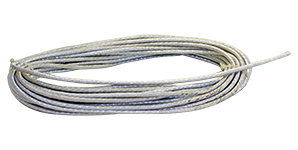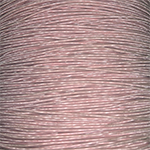The
term litz wire is derived from the German word litzendraht meaning
woven wire. Generally defined, it is a wire constructed of individually
film insulated wires bunched or braided together in a uniform
pattern of twists and length of lays. The multistrand configuration
minimizes the power losses otherwise encountered in a solid conductor
due
to the skin effect or tendency of radio frequency current to
be concentrated at the surface of the conductor. In order to
counteract this effect, it is necessary to increase the amount
of surface area without appreciably increasing the size of
the conductor. It is also essential to position each individual
strand
in the litz construction in a uniform pattern moving from the
center to the outside and back in a given length. Efficiency
of the stranded conductor can be multiplied by increasing the
number of twists per foot. Generally, six to eight twists per
foot is common. All three of our selections have 40 twists
per foot, creating a much more electrically efficient and costly
to produce.
Our Litz wire was made by Kerrigan
Lewis. The current industry standard insulation is a polyurethane
film for insulating individual strands because of its low
electrical losses
and its solderability. Additionally, our wire has "Heavy Nyleze",
an extra thick coating. THIS FILM BURNS AWAY IN THE SOLDERING PROCESS!
Some litz wires are further insulated with a single or double wrap,
or serving of a textile, typically nylon. Our 12/36 is so covered.
The 7/36 and 8/36 are unserved. |



